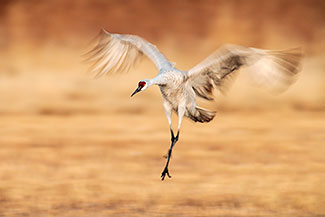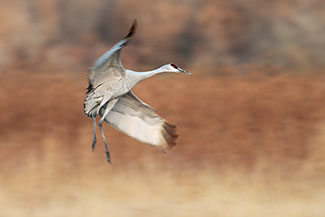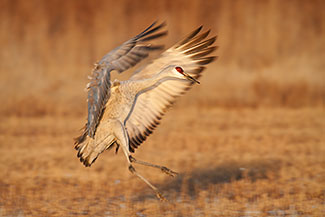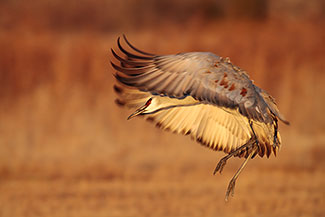Sunset Landing, Sandhill Crane
(Click an image to enlarge)
This is a series of four sandhill crane images that were each captured under different circumstances using different shutter speeds, all of which are slower than would be typical. A panning technique was used to maintain sharpness in the heads of these birds. An essay discussing the use of motion blur for creative effects is posted here in our essays section.
Fossil evidence indicates that sandhill cranes have survived unchanged for more than 10 million years, making them the oldest bird species existing today. Mated pairs stay together year round. Their courtship commences with an elaborate mating dance where the birds face each other, make croaking noises, and jump several feet into the air with extended wings. Then they bow to each other and repeat the ritual many times. Once mated they build 3 to 5 foot wide haystack nests of vegetation close to shallow marshes. Sandhill cranes migrate in groups with their offspring, and individuals typically have a lifespan of between 18 and 24 years. They are large birds, standing up to four feet tall with a wingspan of nearly 80 inches. Sandhill cranes are omnivorous, feeding on berries, grains, seeds, insects, small rodents, snakes, and lizards, but they do not fish like most wading birds.



